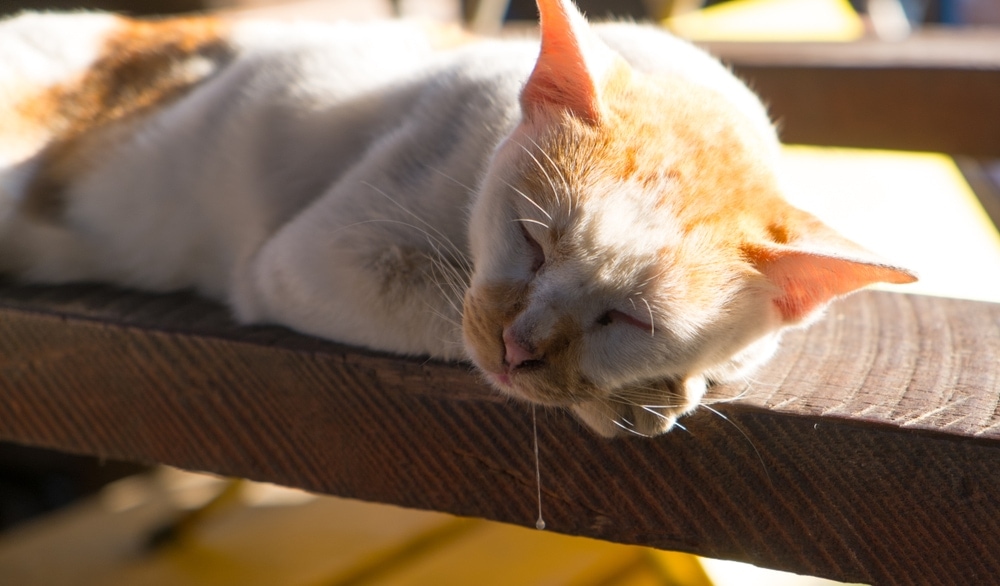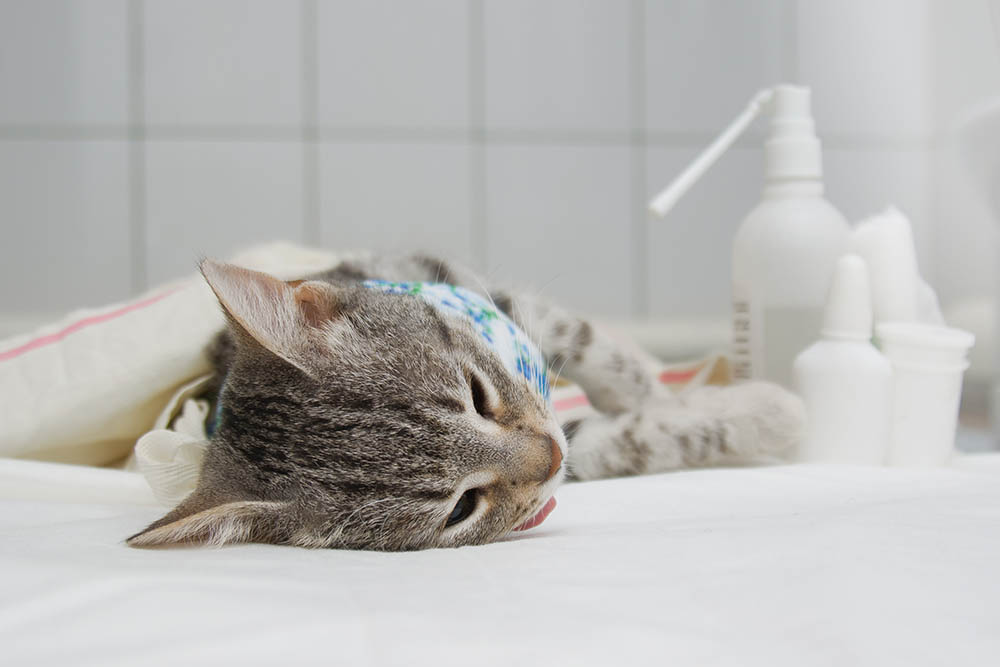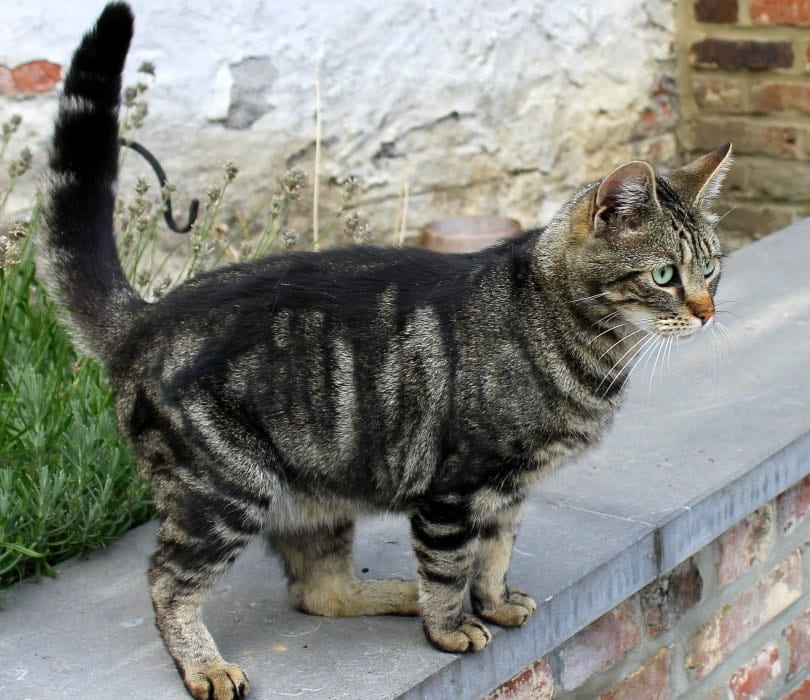10 Short Tail Cat Breeds (with Pictures)

Updated on
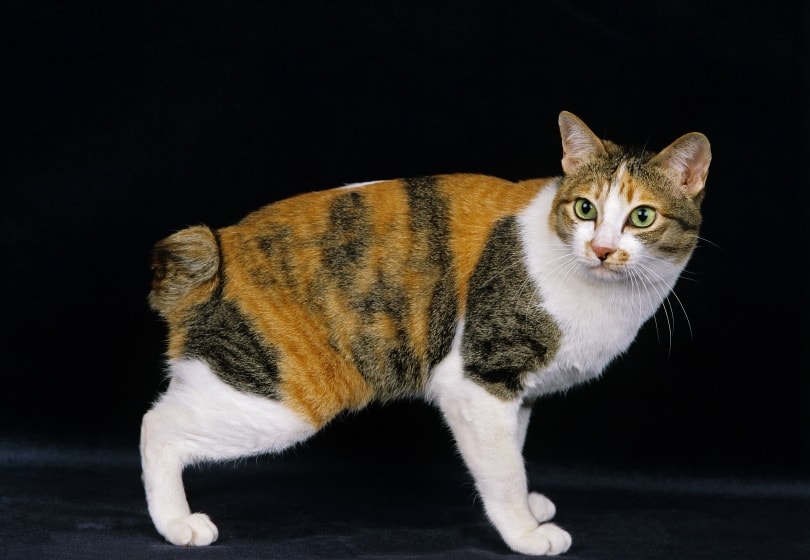
Short-tail cats are unique and stand out because of their distinctive tail—or more accurately, lack of tail. Thanks to a naturally occurring gene mutation, some breeds are missing the long, expressive tails we’re so used to seeing on most domestic cats.
What unites them also makes them different from one another. The cats’ little tails can be straight, bent, fluffy, or kinked. Just like their counterparts with tails, they differ in many ways: size, appearance, and personality.
Here is your guide to 10 short-tail cat breeds, which includes what makes them so different from one another and why they might make a perfect addition to the family.
The 10 Short Tail Cat Breeds
1. American Bobtail
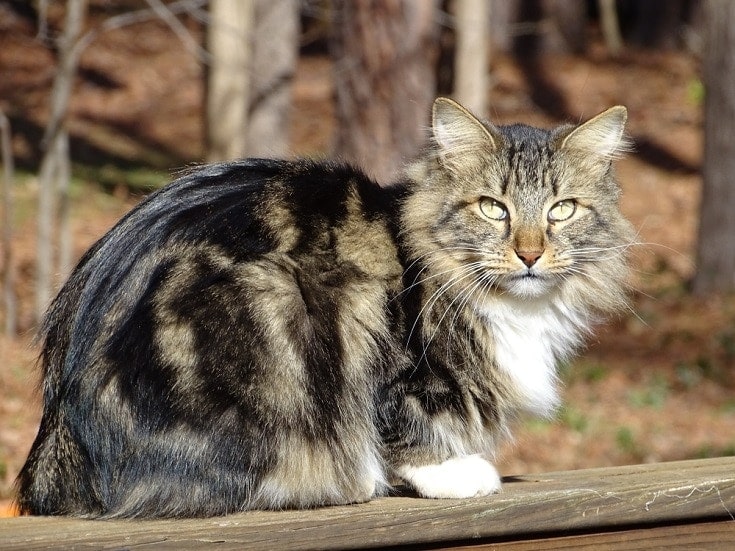
| Height: | 9–10 inches |
| Weight: | 7–16 pounds |
| Coat and Color: | Short and long coats which come in practically any color/pattern |
| Life Expectancy: | 13–18 years |
The American bobtail cat’s origin dates back to the 1960s. An American couple adopted a stray cat they crossed with their female Siamese. Many of the resulting kittens had short tails, and this trait was then selectively bred.
The American bobtail cat has a tail that averages 1–4 inches long, and it can be straight, slightly curved, kinked, or bumpy along the edges in appearance. Besides their good looks, these cats can make wonderful additions to any family.
They are adaptable, intelligent, playful, and friendly. American bobtails get along well with children and other pets and love a challenge. So, you may find yourself investing in puzzle games to keep your new pet’s mind busy!
2. Manx
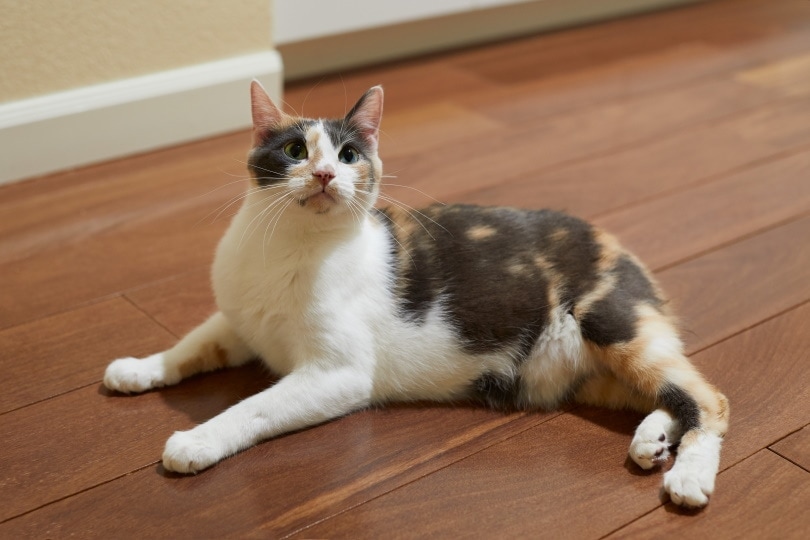
| Height: | 7–9 inches |
| Weight: | 8–12 pounds |
| Coat and Color: | Short and dense; various colors |
| Life Expectancy: | 8–14 years |
Interestingly, some Manx cats have no tails, while others have short tails. A tailbone protrusion is known as a “rumpy riser,” while a cat without a tail is called a “rumpy.” Whatever the tail length, these cats are muscular and big-boned.
The Manx cat is also a calm soul, but with one in your home, you don’t need a watchdog; you’ll have a watchcat. Manx will growl and even attack if they feel it’s necessary. When they see you’re not alarmed, they’ll calm back down, but it’s clear that strangers should not disturb a Manx and its family.
3. Pixie-Bob
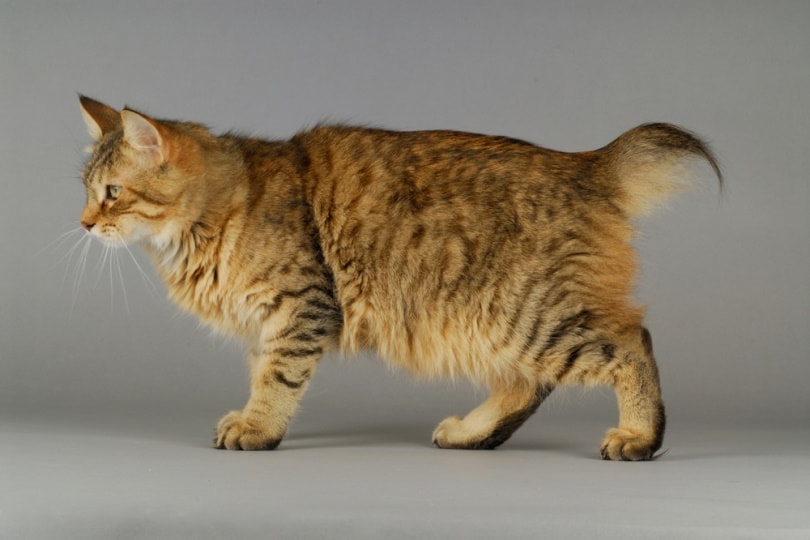
| Height: | 12–13 inches |
| Weight: | 8–17 pounds |
| Coat and Color: | Short to shaggy coat; varying shades of brown and black |
| Life Expectancy: | 12–15 years |
The Pixie-bob’s tails can range in length from being so small they’re practically non-existent to a few inches or full-length. They look like mini-bobcats, and, as a result, they are the wildest-looking bobtail breed.
Despite this wild appearance, the pixie-bob is affectionate and “helpful.” Whatever you happen to be doing (making lunch or tidying your bedroom), your pixie-bob cat will want to help you before snuggling on the sofa with you.
Another interesting fact about the pixie-bob is that many of them are polydactyl (their paws have extra toes).
4. Japanese Bobtail
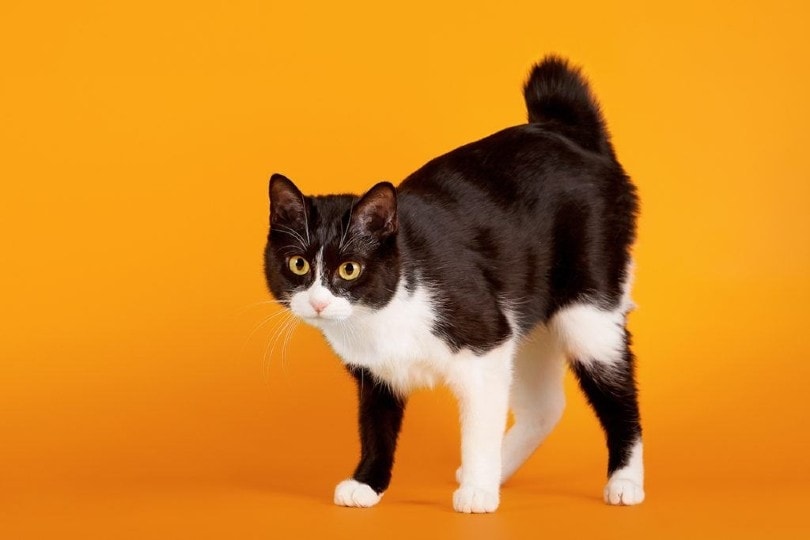
| Height: | 8–9 inches |
| Weight: | 5–10 pounds |
| Coat and Color: | Medium-length coat; comes in a variety of colors |
| Life Expectancy: | 15–18 years |
The Japanese bobtail’s tail can vary from cat to cat to some degree, but generally, it resembles a pom-pom. This cat can be traced back to 8th century Japan and is associated with good luck. Interestingly, the Japanese bobtail is featured in a famous statue you’ll recognize: the paw-waving “lucky cat” icon.
Japanese bobtails are curious, bold, and fun. They are lean and athletically built, love cuddles and play, and love being around people and other cats.
5. Kurilian Bobtail
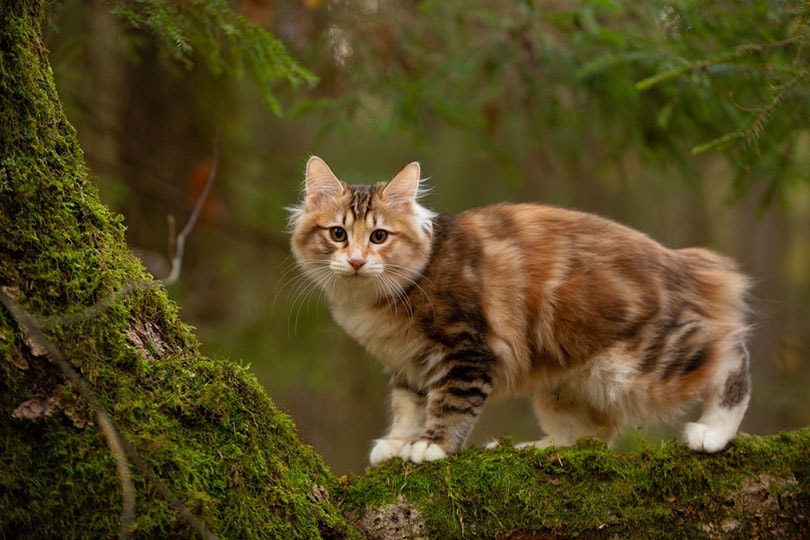
| Height: | 9–12 inches |
| Weight: | 8–15 pounds |
| Coat and Color: | Soft and silky, short to semi-long coat in various colors |
| Life Expectancy: | 15–20 years |
The Kurilian bobtail tail is a naturally occurring trait and ranges in length. It looks like a pom-pom but can go from 1½ to 5 inches, so every tail is different. These muscular cats have long hind legs that make them incredible jumpers.
They are adaptable, trusting, and outgoing. Kurilians love children and other animals, and a bonus point is given to the person or pet who wants to play because they’re always up for it! They love a cuddle on the sofa and pick favorites within the family that they will make evident by giving everyone else the cold shoulder when they’re with their favorite human.
5. Cymric
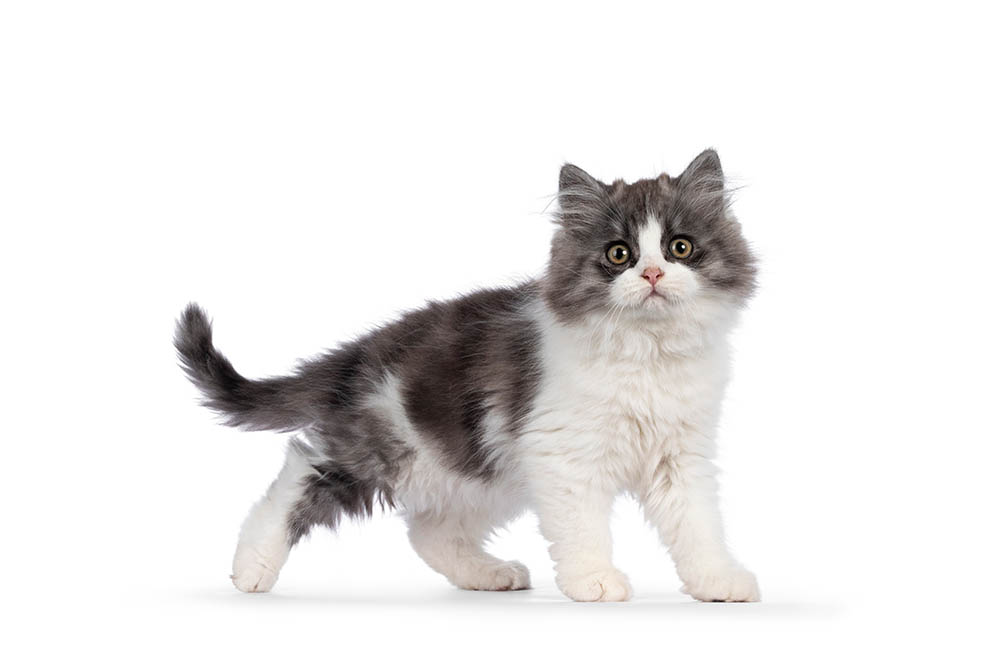
| Height: | 7–9 inches |
| Weight: | 8–12 pounds |
| Coat and Color: | Medium to long fur length in many colors and patterns |
| Life Expectancy: | 8–14 years |
The Cymric cat is believed to be so similar to the Manx that it is basically a medium to longhaired version. Like the Manx, the Cymric cat’s tail can range from a rumpy to a rumpy riser.
They are calm cats but protective of their family, and if they can’t find space on your lap to sit, they’ll choose a seat that keeps you in view. They love to play and will play fetch as well as any dog. Cymris will even walk on a leash if you introduce it early enough.
7. Highlander
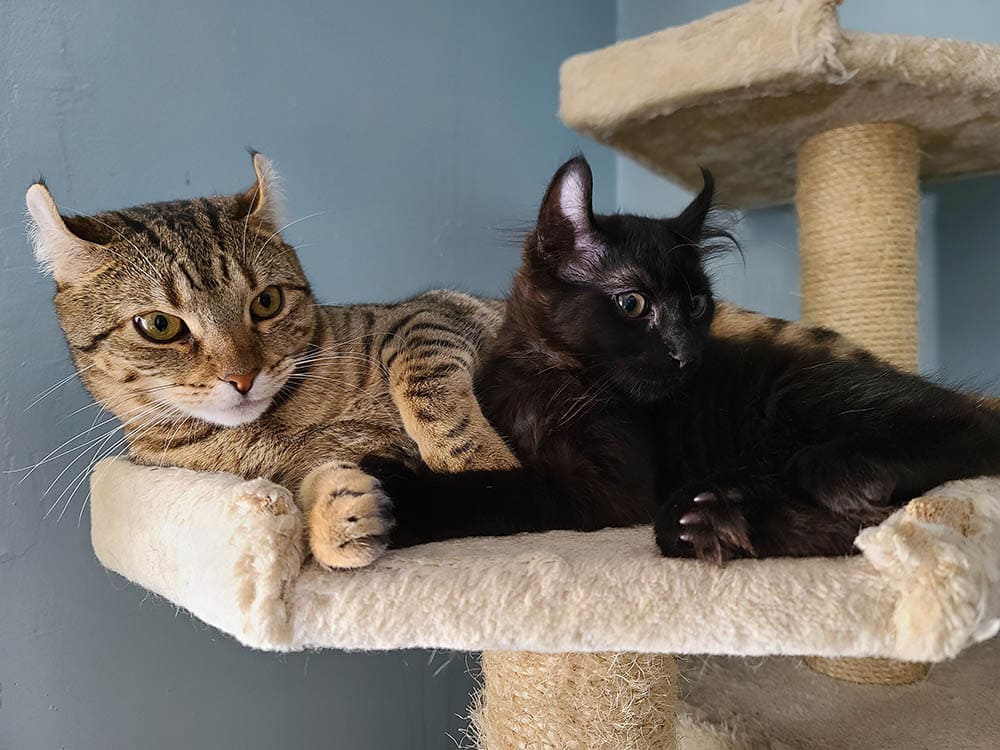
| Height: | 10–16 inches |
| Weight: | 10–20 pounds |
| Coat and Color: | Short and long coat with various colors and patterns |
| Life Expectancy: | 10–15 years |
Highlander kittens can be born with full-length tails but generally have bobbed tails ranging from 2–6 inches. The Highlander is a relatively new breed. It used to be known as the Highlander Lynx and originated in 2004, but the name changed to Highlander in 2005.
It is a cross between a Desert Lynx and a Jungle Curl. Since it is crossed with two hybrids, it doesn’t have any wildcat genes. It’s a gentle, loving cat that is packed full of energy. A fun fact about them is they are one of the few cats that like water. They will be fascinated by a running tap and won’t mind getting splashed as they investigate.
8. Mekong Bobtail
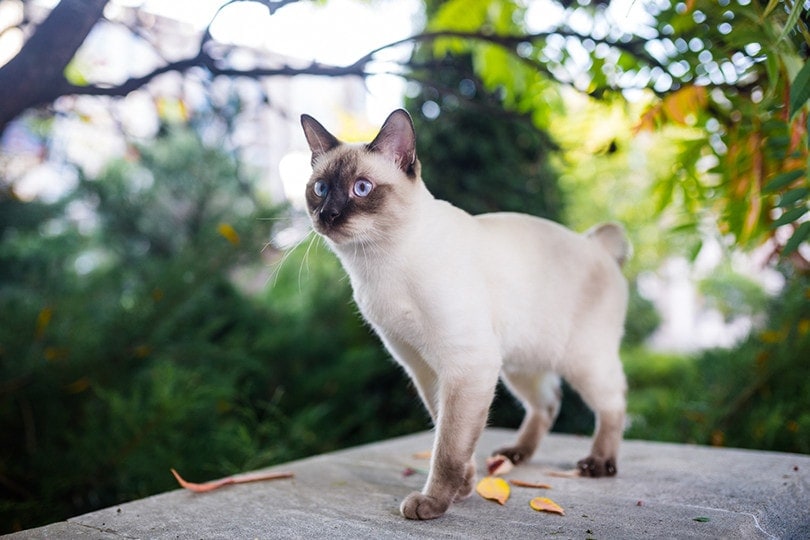
| Height: | 7–9 inches |
| Weight: | 8–10 pounds |
| Coat and Color: | Short and glossy fur with barely any undercoat; comes in a variety of colors |
| Life Expectancy: | 15–18 years |
The Mekong’s tail can be curved or kinked in different ways, so no two tails have the same appearance. They are an athletic and agile cat that doesn’t need their tail for climbing adventures.
They are loyal and loving, so don’t be surprised to see them following you wherever you go. As a result, they can suffer from loneliness if left alone in the house for too long. They enjoy the hustle and bustle of family life, so they are well-suited to families with children.
9. Karelian Bobtail

| Height: | 8–12 inches |
| Weight: | 10–15 pounds |
| Coat and Color: | Long or short, silky and incredibly dense coat; comes in several patterns and colors |
| Life Expectancy: | 15–18 years |
The tail of the Karelian can be bent, twisted, and kinked and ranges from 1½–5 inches in length. Since the fur is longer on the tail than the body, it resembles a pom-pom.
They originated in the Republic of Karelia near the Finnish border, and the breed existed for at least 200 years with little human intervention. These cats are adaptable, friendly, quiet, and curious. They do well in a family setting, and they love relaxing on the couch with their human friends.
10. Desert Lynx

| Height: | 10–16 inches |
| Weight: | 8–16 pounds |
| Coat and Color: | Spotted/ticked coat; comes in chocolate, silver, black, or blue colors |
| Life Expectancy: | 13–15 years |
The desert lynx’s tails can be the length of a bobcat’s (halfway to the ground), docked, or anywhere in between. It’s a mixed-breed cat, and there is arguably some bobcat DNA in there, but several domestic cat breeds are also in its genetic makeup, like the American lynx, Maine Coon, Pixie-Bob, and the Manx.
Despite their rugged appearance, they are playful, social, and outgoing and act more like domesticated dogs. Their legs are their most distinguishing feature, with the hind legs noticeably longer than their forelegs. Today, you are more likely to find them in a shelter than a breeder’s facility, so you can save money on adoption fees and rescue a lovable feline!
Conclusion
All these cat breeds have short tails, but it’s clear they come in various shapes and sizes. They each have unique personalities, and even their short tails within the same breed can be remarkably different from one another.
You might be looking for an energetic best friend like the Highlander or a loyal Manx that will protect your kids like its own. Although short-tail cats have distinctive traits, they make exceptional pets for families of all sizes.
See also:
- Why Cats’ Tails Are So Long? – 7 Interesting Reasons
- 8 Hairless Cat Breeds: Bald & Beautiful (with Pictures)
Featured Image Credit: slowmotiongli, Shutterstock

